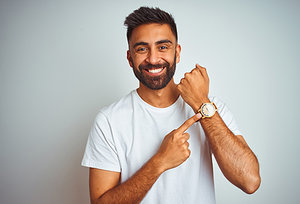2 Minutes at a Time
By Editorial Staff
"I don't have the time" is repeatedly mentioned as a top reason for not exercising consistently, failing to start an exercise program or discontinuing one. While we're not claiming to understand how busy your average day is or what can complicate your ability to exercise, we hope you can agree that two minutes isn't impossible, right? Good, because those two minutes can make a big difference.
We're talking about two minutes of walking after eating, and the big difference it can make relates to blood glucose and insulin. The diabetes epidemic is in full swing, with projections suggesting it will only get worse in the next few decades. Your body's ability to regulate blood sugar is key to diabetes (type 2 diabetes) prevention. It does that by releasing the right amount of insulin to effectively remove glucose from the bloodstream. If your body has to produce too much insulin and/or can't reduce blood glucose levels, you're in danger of developing diabetes.
 According to a new analysis of previous studies, light-intensity walks after eating (two to five minutes per bout) reduces not only blood glucose, but also insulin; more so than simply standing. Doing either was superior to sitting; something too many people do during the course of the day and following meals. Findings appear in the journal Sports Medicine and are based on a review of seven one-day studies involving adults ages 18 and older who were generally overweight or obese (and thus at higher risk for blood glucose / insulin issues to begin with).
According to a new analysis of previous studies, light-intensity walks after eating (two to five minutes per bout) reduces not only blood glucose, but also insulin; more so than simply standing. Doing either was superior to sitting; something too many people do during the course of the day and following meals. Findings appear in the journal Sports Medicine and are based on a review of seven one-day studies involving adults ages 18 and older who were generally overweight or obese (and thus at higher risk for blood glucose / insulin issues to begin with).
Can't find time to exercise? Start by standing up and walking more! As this analysis shows, it doesn't take much; it's all about breaking up your day, particularly after meals, with short bouts of walking. A little goes a long way toward improving your health and potentially reducing your type 2 diabetes risk.

